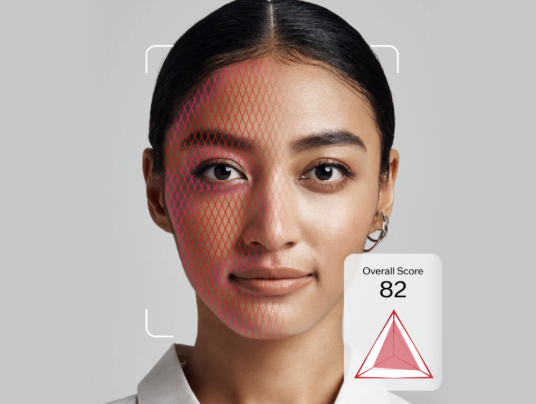Artificial intelligence has moved steadily into daily life in Japan. Once a topic of curiosity and cautious optimism, it has become an essential part of the country’s digital fabric, shaping how people search, shop, learn, and communicate.
According to our latest research, nearly half of Japanese consumers now feel that AI has become “closer” to them than it was two years ago, signaling a nation quietly embracing a technology once met with hesitation.
Unlike AI adoption in Western markets, where it is often loud and experimental, Japan’s relationship with it is defined by restraint and trust. The shift is more about balance and less about disruption. It is an evolution where innovation must align with reliability, empathy, and respect. This deliberate pace reflects deeper cultural priorities: precision over experimentation, human connection over automation, and confidence built through experience rather than persuasion.
Younger men, particularly those in their twenties and thirties, are leading this familiarity, while older consumers, especially women over fifty, remain more reserved. Yet across all groups, one message is consistent: AI is no longer a concept for the future. It has become an integral part of how Japanese consumers navigate their everyday lives.
For brands, this evolution demands sensitivity as much as sophistication. Success in Japan’s AI era will depend on how seamlessly technology integrates into consumers’ routines and how clearly it earns their trust.

Everyday AI and the Invisible Integration into Japanese Life
In Japan, AI works best when it disappears. From search engines that summarise results to navigation apps that predict congestion, most consumers use AI daily without explicitly recognising it. Our research shows that these quiet, practical uses dominate, reflecting Japan’s cultural preference for technology that simplifies life rather than transforms it.
This practicality defines the country’s digital behaviour. Consumers value AI that removes friction, not one that demands attention. The most successful examples are often invisible: the search engine that interprets a vague query, the recommendation system that anticipates a user's need, or the navigation tool that adjusts routes in real-time.
Brands like Yahoo! Japan, Rakuten, and Toyota have refined this approach. They integrate AI into services people already trust, enhancing familiarity rather than introducing novelty. Toyota’s predictive mobility systems, for example, improve travel efficiency without rebranding themselves as “AI solutions.” These subtle advances mirror Japan’s long-held philosophy of kaizen, or continuous improvement that values small, meaningful progress over dramatic leaps.
For brands, the lesson is clear: innovation must feel effortless. The AI that succeeds in Japan will be the kind that quietly improves life, not the one that demands to be noticed.

The Trust Gap in Japan’s Relationship with AI
Even as AI becomes familiar, trust remains fragile. Japanese consumers welcome convenience but question the level of control. The study reveals persistent anxieties surrounding misinformation, data misuse, and the erosion of human creativity, fears deeply tied to the country’s reverence for authenticity and craftsmanship.
The rise of deepfakes and algorithmic bias has intensified public concern that truth could become harder to verify. In a society where credibility is a cornerstone of both business and culture, the possibility of AI-generated falsehoods feels particularly invasive. Privacy concerns are equally pronounced, with consumers wary of invisible data collection and automated decision-making.
These worries are not about rejecting progress but about protecting integrity. Japan’s approach to technology has always been guided by precision and accountability, qualities that AI must now embody.
For brands, this means moving beyond compliance to clarity. Japanese consumers want to understand how AI works, not just see its outcomes. Explaining data handling practices, disclosing model limitations, and maintaining visible human oversight are not optional but are pathways to loyalty. In Japan, trust is not assumed; it must be earned.
Human Connection Remains Central in Japan’s AI Era
Despite growing adoption, AI has not replaced the human element in Japan. The study indicates that while consumers turn to AI for structured tasks, such as learning, cooking, or work, they still seek people for emotional guidance, health decisions, and personal concerns.
This distinction reflects Japan’s cultural intuition: intelligence can be automated, empathy cannot. AI is viewed as a capable assistant, but not a confidant. Its value lies in information and efficiency, not emotional depth.
For brands, this insight is pivotal. The future of AI-driven engagement in Japan lies in enhancing human connection, not automating it. Hybrid customer experiences where AI handles logic and humans provide reassurance are where loyalty is built.
Case Study: Shiseido’s AI-Enhanced Skin Diagnostics with Human Touch

Image Credit: Shiseido
Challenge
Shiseido, a leading Japanese cosmetics company, has long balanced high tech and human artistry. As consumer expectations shift toward personalisation, Shiseido faced the tension of providing digital precision without eroding the emotional trust that beauty brands must cultivate.
Implementation and Design
Shiseido’s AI skin analysis provides informed recommendations, while human advisors oversee the final care.
- Shiseido introduced tools like the Skin Visualizer, a touchless AI-driven analyzer that evaluates skin conditions and offers personalised recommendations.
- In parallel, its R&D arm developed “4D-digital skin” technology, which visualises the internal structure and movement of skin layers over time using AI and imaging techniques.
- Importantly, Shiseido does not leave consumers in the dark. The AI insights inform human-mediated consultations, whether online or in-store, where advisors interpret the results, contextualise them in relation to user priorities, and co-create personalised skincare plans.
Outcomes and Implications
- The hybrid model preserves human connection: AI handles heavy data processing and pattern recognition, while humans provide empathy, explanation, and validation.
- For Japanese consumers, this aligns directly with the preference (shown in the survey) for AI in functional roles but humans in emotional or relational roles.
- For brands, the lesson is clear: AI can increase precision, but trust is built through human context.
What Makes AI Feel Personal in Japan
Across demographics, Japanese consumers describe AI as helpful, polite, and reliable, words that reveal emotional as much as functional appreciation. For many, AI has shifted from tool to companion: something that eases decision-making, reduces stress, and occasionally entertains.
Younger users often treat AI as a learning partner, a tool for studying languages, exploring ideas, or generating creative ideas. Middle-aged users view it as a time-saver, helping them summarise information or organise daily tasks. Older consumers value it most when it makes digital life simpler and less intimidating.
The “fun” in AI comes from discovery, uncovering niche recommendations or unexpected solutions. The “convenience” comes from empathy, a sense that the system understands intent without overexplaining.
For brands, this is a powerful insight: the most effective AI experiences in Japan are those that anticipate needs and respond with warmth. In Japan, design language is just as important as functionality.

Generational Differences Shape Japan’s Connection with AI
AI adoption in Japan mirrors its demographics, uneven but deeply telling. Younger consumers, especially men in their twenties and thirties, feel most connected to AI, while older generations remain cautious. This is less about rejection and more about trust through experience.
For younger users, AI signifies possibility, or a way to enhance creativity and autonomy. For older individuals, it represents uncertainty, particularly regarding data control and transparency in decision-making. Yet both groups share one principle: technology must serve, not steer, human behaviour.
This insight has direct consequences for brands. Campaigns that emphasise empowerment and personalization resonate more with younger audiences. For older consumers, success lies in clear guidance, visible safeguards, and optional human touchpoints.
Case Study: Panasonic’s Fujisawa Sustainable Smart Town — Inclusive AI for Ageing Communities

Image Credit: Fujisawa
Challenge
Japan faces a rapidly ageing population. Panasonic envisioned a living environment where smart technologies support older residents without complexity or intrusion.
Implementation and Design
- Developed Fujisawa Sustainable Smart Town (Fujisawa SST) on a former factory site, combining sustainability, mobility, wellness, and technology integration.
- Within the town, a Wellness SQUARE hub links health, care, and community services. For elder care and assisted living, AIoT (AI + Internet of Things) systems enable remote monitoring, emergency support, and seamless service coordination.
- The project phases include residences built for active seniors, as well as integrated community infrastructure featuring sensors, shared mobility, energy systems, and alerts.
Outcomes and Implications
- Residents benefit from care and safety services that operate largely in the background, reducing the burden of constant interaction with complex systems.
- For older consumers, who in our survey expressed low familiarity and higher caution toward AI, this model demonstrates that technology doesn’t need to be intimidating to be helpful.
- For brands and designers, Fujisawa SST is a real-world prototype for inclusive AI design: systems that assist without overwhelming, that elders can adopt gradually, and that bridge utility and trust.
What Brands Can Learn from Japan’s Approach to AI
Japan’s experience offers a blueprint for brands navigating the global evolution of AI. Three lessons stand out:
- Trust by design: Consumers are scrutinising intent as much as function. Explainability, ethical clarity, and transparent data practices must be built into every AI interaction.
- Humanised automation: The winning formula is not human or machine; it’s human through machine. Brands that combine AI’s speed with emotional intelligence will lead.
- Inclusive innovation: A one-size-fits-all model doesn’t work. Success means tailoring AI for different comfort levels, from digital natives to older adopters.
The Future of Human-Centred AI in Japan
Japan’s next transformation won’t come from machines surpassing people, but from technology learning to move in harmony with them. Its approach to AI is calibration, a blend of ethics, empathy, and quiet progress.
While other markets race to automate, Japan refines. Its consumers are defining the boundaries of AI use, deciding when it should assist, when it should listen, and when it should fade into the background. This restraint is not hesitation; it’s design philosophy.
For brands, the challenge is not to persuade but to prove and show that technology can adapt to human pace, values, and judgment. The AI that thrives in Japan will be the one that respects context, builds trust over time, and improves life in subtle but unmistakable ways.
In a world obsessed with scale and speed, Japan offers a different model of progress, one that is thoughtful, deliberate, and profoundly human.
Read Next: AI’s Great Divide — East vs West
Japan’s story is one chapter in a much broader global narrative. Cultural values continue to shape how societies perceive, trust, and apply AI. Explore how these differences are redefining worldwide innovation and brand strategy in AI’s Great Divide: East vs West, available for download here.





